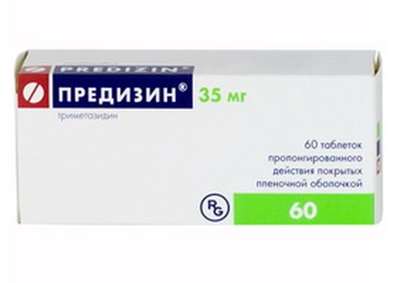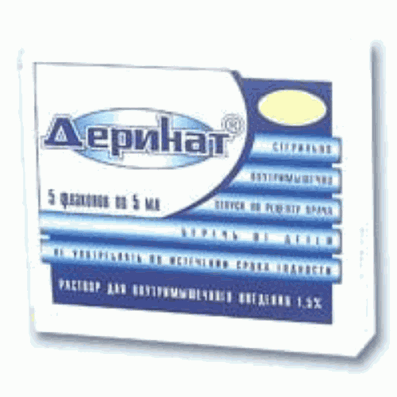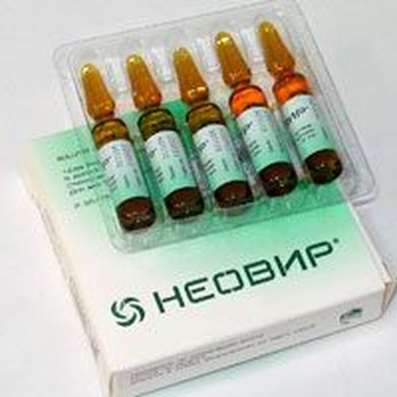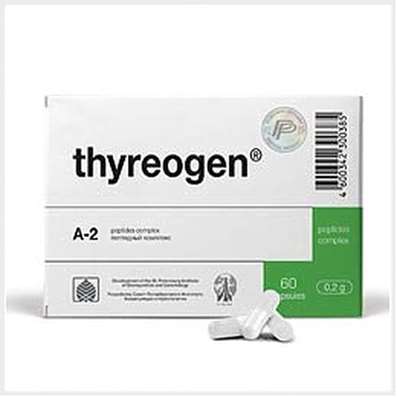Instruction for use: Naproxen (Naproxenum)
I want this, give me price
Pharmacological group
NSAIDs - Propionic acid derivatives in combinations
Nosological classification (ICD-10)
J06 Acute upper respiratory infections of multiple and unspecified
Frequent colds viral diseases, Infections of the upper respiratory tract, Acute respiratory disease influenza character, for colds Pain, Acute colds,Cold, respiratory infection,Seasonal colds, Pain in infectious and inflammatory diseases of the upper respiratory tract, Bacterial infections of the upper respiratory tract, Bacterial respiratory infections, Viral disease of the respiratory tract, Viral respiratory tract infections, Inflammatory disease of the upper respiratory tract, Inflammation of the upper respiratory tract disease, Inflammation of the upper respiratory tract illness with difficult sputum, Inflammatory airway disease, Secondary infections with colds, Shortness of sputum in acute and chronic respiratory diseases, Upper respiratory tract infection, Infections of the upper respiratory tract, Respiratory Tract Infections, Infections of the respiratory tract and lungs, Infectious-inflammatory diseases of the upper respiratory tract, Infectious-inflammatory diseases of the upper respiratory tract and ENT-organs, Infectious-inflammatory diseases of the upper respiratory tract in children and adults, Infectious-inflammatory diseases of the upper respiratory tract, Infectious inflammation of the airways,respiratory infection, Qatar upper respiratory tract, Catarrh of the upper respiratory tract, Catarrhal disease of the upper respiratory tract, Catarrhal symptoms of the upper respiratory tract, Coughing with a cold, SARS, ARI, ARI with rhinitis phenomena, Acute respiratory infection, Acute infectious and inflammatory disease of the upper respiratory tract, Acute respiratory disease, Sore throat or nose, Respiratory viral infections, Respiratory diseases, Respiratory infections, Recurrent respiratory infections, Secondary infection with influenza, cold in the chest, Feverish condition with flu usitis, acute sinusitis, genyantritis, purulent sinusitis
K08.8.0 * Painful toothache
Dentinal pain, Dentinal pains, Pain pulpitis, Anesthesia in dentistry, Pain syndromes in dental practice, Pain after removal of tartar, Pain when extracting a tooth, Toothache, Pain after dental interventions
M06.9 Other specified rheumatoid arthritis
Rheumatoid arthritis,Pain syndrome in rheumatic diseases, Pain in rheumatoid arthritis, Inflammation in rheumatoid arthritis, Degenerative forms of rheumatoid arthritis, Children's rheumatoid arthritis, Exacerbation of rheumatoid arthritis, Acute articular rheumatism, Rheumatic arthritis, Rheumatic polyarthritis, Rheumatoid arthritis, Rheumatic polyarthritis, Rheumatoid arthritis, Rheumatoid arthritis of active course, Rheumatoid arthritis, Rheumatoid polyarthritis, Acute rheumatoid arthritis, Acute rheumatism
M08.0 Juvenile rheumatoid arthritis
M10.0 Idiopathic Gout
Primary gout
M19.9 Arthrosis, unspecified
Change in brush with osteoarthritis, Osteoarthritis, Osteoarthrosis, Arthrosis of large joints, Pain syndrome in osteoarthritis, Pain syndrome in acute inflammatory diseases of the musculoskeletal system, Pain syndrome in chronic inflammatory diseases of the musculoskeletal system, Deforming arthrosis, Deforming osteoarthritis, Deforming osteoarthritis of joints, Osteoarthritis in the acute stage, Osteoarthritis of large joints, Acute pain syndrome with osteoarthritis, Post-traumatic osteoarthritis, Rheumatic osteoarthritis, Spondylarthrosis, Chronic osteoarthritis
M45 Ankylosing spondylitis
Ankylosing spondylarthrosis, Marie-Strumpel disease, Ankylosing spondylitis, Pain syndrome in acute inflammatory diseases of the musculoskeletal system, Pain syndrome in chronic inflammatory diseases of the musculoskeletal system, Bechterew's disease, Ankylosing spondylitis, Diseases of the spinal column, Rheumatic spondylitis, Bechterew-Marie-Strumpel disease
M54.1 Radiculopathy
Acute sciatica, Radiculopathy, Radiculitis, Radiculitis with radicular syndrome, Acute radiculopathy, Pain syndrome with radiculitis, Subacute radiculitis, Radiculitis, Chronic radiculitis, Diseases of the spinal column
M77.9 Other unspecified
Capsule, Periarthritis, Tendonitis, Tendopathy, Periarthropathy
M79.1 Myalgia
Myofascial pain syndromes ,Pain syndrome in musculo-articular diseases, Pain syndrome in chronic inflammatory diseases of the musculoskeletal system, Pain in the muscles, Tenderness of muscles, Muscular soreness in severe physical exertion, Painful conditions of the musculoskeletal system, Pain in the musculoskeletal system, Pain in the muscles, Pain at rest, Muscle aches, Muscle pain, Musculoskeletal pain, Myalgia, Muscle pain, Muscle pain at rest, Muscle pain, Muscular pain of non-rheumatic origin, Muscle pain of rheumatic origin, Acute muscle pain, Rheumatic pain, Rheumatic pains, Myofascial syndrome, Fibromyalgia
M79.2 Neurology and neuritis, unspecified
Pain syndrome with neuralgia, Brachialgia, Occipital and intercostal neuralgia, Neuralgia, Neuralgic pain, Neuralgia, Neuralgia of intercostal nerves,Neuralgia of the posterior tibial nerve, Neuritis, Neuritis traumatic, Neuritis, Neurological Pain Syndromes, Neurological contractures with spasms, Acute neuritis, Peripheral neuritis,Post-traumatic neuralgia,Severe pain of a neurogenic nature, Chronic neuritis, Essential neuralgia
M89.9 Disease of bone, unspecified
Local osteopathy, Disturbance of bone mineralization processes, Osteopenia, Pain syndrome in acute inflammatory diseases of the musculoskeletal system, Pain syndrome in chronic inflammatory diseases of the musculoskeletal system, Pain in the musculoskeletal system, Infection of bones, Ossalgia, Pain in chronic degenerative bone diseases
N70 Salpingitis and oophoritis
Adnexitis, Inflammatory diseases of female genitalia, Inflammatory diseases of female genital organs, Infection of the genitals, Oophoritis, Acute adnexitis, Salpingitis, Salpingo-oophoritis, Chronic inflammatory diseases of the ovaries, Inflammation of the ovaries
N94.4 Primary dysmenorrhea
Primary functional dysmenorrhea, Pain in primary dysmenorrhea, Primary algodismenorea, Menstrual cramps
R50 Fever of unknown origin
Malignant hyperthermia, Hyperthermia malignant
R51 Headache
Pain in the head, Cephalgia, Pain with sinusitis, Pain in the back of the head, Painful headache, Headache of vasomotor genesis, Headache of vasomotor origin, Headache with vasomotor disorders, Headache, Neurological headache, Serial headache
R52.9 Unspecified Pain
Pain after cholecystectomy, Pain shooting, Non-malignant pain, Obstetric and gynecological pain, Pain syndrome, Pain in the postoperative period, Pain in the postoperative period after orthopedic surgery, Pain of inflammatory genesis, Pain than cancer genesis, Pain syndrome after diagnostic procedures, Pain after surgery Diagnostic, Pain after surgery, Pain after orthopedic surgery, Pain after injuries, Pain after the removal of hemorrhoids, Pain at the non-rheumatic inflammation of nature, Pain in inflammatory lesions of the peripheral nervous system, Pain in diabetic neuropathy, Pain in acute inflammatory diseases of the musculoskeletal system, Pain when the tendon pathology, Pain smooth muscle spasm, Pain spasm of smooth muscles (renal and biliary colic, intestinal spasms, dysmenorrhea), Pain spasm of smooth muscles of internal organs, Pain spasm of smooth muscles of internal organs (kidney and biliary colic, intestinal spasms, dysmenorrhea), Pain in trauma syndrome, Pain with injuries and after surgical interventions, Pain in chronic inflammatory diseases of the musculoskeletal system, Pain with duodenal ulcer, Pain syndrome in gastric ulcer, Pain syndrome in gastric ulcer and duodenal ulcer, pain, Pain during menstruation, pain syndromes, painful condition, Painful foot fatigue, Sore gums when wearing dentures, Soreness of the cranial nerves exit points, Painful menstrual irregularities, Painful dressings, Painful muscle spasm, Painful teeth growth, Melosalgia, Pain in the area of the surgical wound, Pain in the postoperative period, Pain in the body, Pain after diagnostic procedures, Pain after orthopedic surgery, Pain after surgery, The pains of the flu, Pain in diabetic polyneuropathy, Pain for burns, Pain during sexual intercourse, Pain during diagnostic procedures, Pain during therapeutic procedures, for colds Pain, Pain in sinusitis, Pain in trauma, Pain traumatic, The pain in the postoperative period, Pain after diagnostic procedures, The pain after sclerotherapy, Pain after surgery, postoperative Pain, Pain postoperative and posttraumatic, posttraumatic pain, Pain when swallowing, Pain in infectious and inflammatory diseases of the upper respiratory tract, The pain of burns, The pain in traumatic muscle injury, Pain in trauma, The pain of tooth extraction, The pain of traumatic origin, Pain caused by spasm of smooth muscles, Expressed pain syndrome, Expressed pain syndrome, traumatic origin, Postoperative pain, Post-traumatic pain, Post-traumatic pain syndrome, Torpid pain, Traumatic pain, Traumatic pain, Mild pain, Moderately severe pain, Moderate pain, Polyarthralgia with polymyositis
T14.9 Injury unspecified
Pain syndrome after trauma, Pain syndrome with injuries, Pain syndrome with trauma and after surgery, Pain in case of injury, Pain of a traumatic nature, Joint pain with injuries, Postoperative and post-traumatic pain, Pain in case of injury, Pain of a traumatic origin, Severe pain syndrome of traumatic origin, Deep tissue damage, Deep scratches on the trunk, Closed injury, Minor Household Injuries, Minor skin damage, Violations of the integrity of soft tissues, Uncomplicated trauma, Extensive traumatic injury, Acute pain syndrome of traumatic origin, Edema with trauma, Postponed sports injuries, Post-traumatic pain, Soft tissue injuries, Joint wounds, Sports injuries, Injury, Traumatic pain, Traumatic pains, Traumatic infiltrate,Injuries to sports
Z100 * CLASS XXII Surgical practice
Abdominal surgery, adenomectomy, Amputation, Coronary angioplasty, Angioplasty of the carotid arteries, Antiseptic skin treatment for wounds, Antiseptic Hand, Appendectomy, atherectomy, Balloon coronary angioplasty, Vaginal hysterectomy, The coronary bypass, Interventions in the vagina and cervix, Interventions on the bladder, Intervention in the mouth, Restoration and reconstructive surgery, Hand hygiene of medical personnel, Gynecologic surgery, Gynecological intervention, Gynecological surgery, Hypovolemic shock during operations, Disinfection of purulent wounds, Disinfection of wounds edges, Diagnostic intervention, Diagnostic procedures, Cervical Diathermocoagulation, Long-surgery, Replacing the fistula catheters, Infection in orthopedic surgery, Artificial heart valve, cystectomy, Short-term outpatient surgery, Short-term operation, Short surgical procedures, Krikotireotomiya, Blood loss during surgery, Bleeding during surgery and in the postoperative period, Kuldotsentez, laser photocoagulation, laser coagulation, retinal laser coagulation, Laparoscopy, Laparoscopy in Gynecology, CSF fistula, Small gynecological operations, Small surgical procedures, Mastectomy and subsequent plastic, mediastinotomy, Microsurgical operations on the ear, Mukogingivalnye operation, suturing, Minor surgery, neurosurgical operation, Immobilization of the eyeball in ophthalmic surgery, testectomy, pancreatectomy, Perikardektomiya, The period of rehabilitation after surgery, The period of, convalescence after surgery, Percutaneous transluminal coronary angioplasty, Pleural thoracentesis, Pneumonia postoperative and posttraumatic, Preparation for surgical procedures, Preparation for surgery, Preparation of the surgeon's hands before surgery, Preparation of the colon for surgical procedures, Postoperative aspiration pneumonia in neurosurgical and thoracic surgery, Postoperative nausea, Postoperative bleeding, postoperative granuloma, postoperative shock, The early postoperative period, myocardial revascularization, Radiectomy, gastric Resection, bowel resection, uterine Resection, liver Resection, enterectomy, Resection of part of the stomach, Reocclusion of the operated vessel, Bonding tissues during surgical procedures, Removal of sutures, Condition after eye surgery, Condition after surgery, Condition after surgery in the nasal cavity, Condition after gastrectomy, Status after resection of the small intestine, Condition after tonsillectomy, Condition after removal of the duodenum, Condition after phlebectomy, Vascular surgery, Splenectomy, Sterilization of surgical instruments, Sterilization of surgical instruments, sternotomy, Dental surgery, Dental intervention in periodontal tissues, strumectomy, Tonsillectomy, Thoracic surgery, total gastrectomy, Transdermal intravascular coronary angioplasty, Transurethral resection, Turbinektomiya, Removal of a tooth, cataract surgery, Removal of cysts, tonsillectomy, Removal of fibroids, Removing the mobile primary teeth, Removing polyps, Removing broken tooth, Removal of the uterus body, Removal of sutures, Urethrotomy, Fistula likvoroprovodyaschih ways, Frontoetmoidogaymorotomiya, Surgical infection, Surgical treatment of chronic limb ulcersm, Surgery, The surgery in the anal area, The surgery on the colon, Surgical practice, The surgical procedure, Surgical interventions, Surgery on the gastrointestinal tract, Surgical procedures on the urinary tract, Surgical procedures on the urinary system, Surgical intervention of the genitourinary system, Surgical procedures on the heart, Surgical manipulation, surgery, Surgery on the veins, Surgical intervention, Vascular surgery, Surgical treatment of thrombosis, cholecystectomy, Partial gastric resection, transabdominal hysterectomy, Percutaneous transluminal coronary angioplasty, Percutaneous transluminal angioplasty, Coronary artery bypass, tooth Extirpation, Extirpation of milk teeth, pulpectomy, pulsative cardiopulmonary bypass, tooth Extraction, teeth Extraction, cataract extraction, Electrocoagulation, endourological intervention, episiotomy, Etmoidotomiya, Complications after tooth extraction
Code CAS
22204-53-1
Characteristics of Naproxen
NSAIDs (non-steroidal anti-inflammatory drugs). Naproksen - white or almost white crystalline powder odorless. It is soluble in lipids, practically insoluble in water at low pH, freely soluble in water at high pH. The octanol / water partition coefficient at pH 7.4 is 1.6-1.8. Molecular weight is 230.26.
Naproxen sodium salt - a crystalline substance of white or white-cream color, freely soluble in water at neutral pH. Molecular weight 252.24.
Pharmacology
Pharmacological action - anti-inflammatory, antipyretic, antiaggregational, analgesic.
Reduces the activity of cyclooxygenase (COX-1 and COX-2), resulting in impaired synthesis of PG (prostaglandins). After ingestion naproxen and naproxen sodium are rapidly and completely absorbed from the digestive tract (gastrointestinal tract), bioavailability is 95%. Cmax in the blood is reached 2-4 hours after taking naproxen and 1-2 hours after taking naproxen sodium. Binding with proteins - 98-99%. The concentration of naproxen in the blood plasma increases in proportion to the dose, when the single dose of 500 mg exceeds the proportionality is violated. T1 / 2 from plasma - 12-17 hours. Biotransformed into 6-O-desmethylnaproxen. The volume of naproxen distribution is 0.16 l / kg, the clearance is 0.13 ml / min / kg. The equilibrium concentration of naproxen is reached after 4-5 days of continuous administration. Approximately 95% is excreted in the urine, <1% in the form of 6-O-desmethylnaproxen, <1% in the form of unchanged drug (66-92% in the form of their conjugates), <3% with feces. With renal failure, metabolites can be accumulated.
The plasma concentration necessary for the development of the analgesic effect is achieved more quickly when administered as the sodium salt of naproxen than with naproxen.
Limits the development of exudative and proliferative phases of inflammation, has an antipyretic effect, inhibits the flow of free radical reactions. It causes a weakening or disappearance of the pain syndrome (including pain in the joints at rest and during movement), reduces the morning stiffness and swelling of the joints, contributes to an increase in the volume of movements. Anti-inflammatory effect occurs by the end of the first week of treatment.
Carcinogenicity. In a 24-month study, no evidence of a carcinogenic effect of naproxen was detected in rats at doses of 8, 16 and 24 mg / kg / day (50, 100 and 150 mg / m2). The maximum dose used was 0.28 MPHP.
Application of Naproxen
Inflammatory and degenerative diseases of the musculoskeletal system, incl. rheumatoid arthritis, osteoarthrosis, ankylosing spondylitis, articular syndrome with exacerbation of gout, juvenile rheumatoid arthritis; pain syndrome: neuralgia, myalgia, ossalgia, radiculitis, headache and tooth pain, tendonitis, pain in cancer, postoperative pain syndrome, accompanied by inflammation, trauma of the musculoskeletal system and soft tissues, adnexitis, primary dysmenorrhea; pain and febrile state with infectious and inflammatory diseases of the upper respiratory tract (as part of complex therapy).
Contraindications
Hypersensitivity, "aspirin" asthma, "aspirin" triad (combination of bronchial asthma, recurrent nasal polyposis and paranasal sinuses and intolerance of acetylsalicylic acid and drugs of pyrazolone series), erosive and ulcerative lesions of the gastrointestinal tract in the phase of exacerbation, hematopoiesis, hepatic and / or renal insufficiency , children under 1 year.
Restrictions for use
Severe heart failure, adolescence (up to 16 years).
pregnancy and lactation
Teratogenic effects. In studies of reproduction in animals with naproxen in doses of 20 mg / kg / day (125 mg / m2 / day), approximately equivalent to 0.23 MPD, rabbits 20 mg / kg / day (220 mg / m2 / day) , or 0.27 MPHP, mice - 170 mg / kg / day (510 mg / m2 / day), or 0.28 MPHR, there was no impairment of fertility or harm to the fetus.
However, reproductive studies in animals do not always predict effects in humans. Adequate and strictly controlled studies in pregnant women have not been conducted. Use in pregnancy is possible if the expected effect of therapy exceeds the potential risk to the fetus.
Nonteratogenic effects. Since it is known that agents that inhibit the synthesis of PG are used to delay premature birth, the risk of neonatal complications such as necrotizing enterocolitis, open arterial duct, intracranial hemorrhage increases. The use of naproxen in the late period of pregnancy can lead to a delay in labor, persistent pulmonary hypertension, renal dysfunction, an abnormal level of prostaglandin E in prematurely born children. Since the effects of substances of this class on the fetal cardiovascular system are known (closure of the botulinum duct), use in the III trimester is excluded.
The action category for fetus by FDA is C.
Naproxen is found in breast milk in women (the concentration is approximately 1% of serum). Since adverse effects of substances that inhibit the synthesis of PG are possible, neonates should not be treated with naproxen in nursing mothers.
Side effects of Naproxen
Side effects most common in clinical trials (possibly related to the use of naproxen):
On the part of the intestine: 3-9% - heartburn, abdominal pain, nausea, constipation; > 1% - diarrhea, indigestion, stomatitis; <1% - meteorism, bleeding / perforation, gastrointestinal ulcers (gastroduodenal), vomiting, increased activity of hepatic transaminases.
From the nervous system and sensory organs: 3-9% - headache, drowsiness, dizziness, tinnitus, visual impairment, hearing impairment; > 1% - vertigo.
From the cardiovascular system and blood (hematopoiesis, hemostasis):> 1% - palpitation; <1% - anemia, increased bleeding time.
On the part of the respiratory system: 3-9% - dyspnea.
From the skin: 3-9% - ecchymosis.
From the genitourinary system: <1% - renal dysfunction.
Allergic reactions: 3-9% - itching, skin rashes, anaphylactoid reactions.
Other: 3-9% - edema; > 1% - increased sweating, purpura, thirst.
Side effects that occurred with a frequency of <1% for clinical trials and post-marketing studies (possibly related to the use of naproxen):
On the part of the intestine: colitis, hematemesis, jaundice, pancreatitis, melena.
From the genitourinary system: glomerular nephritis, hematuria, hyperkalemia, interstitial nephritis, nephrotic syndrome, renal failure, renal papillary necrosis.
From the cardiovascular system and blood (hematopoiesis, hemostasis): agranulocytosis, eosinophilia, granulocytopenia, leukopenia, thrombocytopenia.
From the nervous system and sensory organs: depression, unusual dreams, inability to concentrate, insomnia, malaise, myalgia, muscle weakness.
Side effects occurred with a frequency of <1% (causal connection with application of naproxen not established):
From the cardiovascular system and blood (hematopoiesis, hemostasis): aplastic anemia, hemolytic anemia.
From the nervous system and sensory organs: aseptic meningitis, cognitive dysfunction.
On the part of the digestive tract: non-peptic ulceration of the gastrointestinal tract, ulcerative stomatitis.
Allergic reactions: epidermal necrolysis, erythema multiforme, Stevens-Johnson syndrome, urticaria; photosensitivity reactions similar to bullous porphyric epidermolysis.
Other: vasculitis, hyper / hypoglycemia, alopecia, photodermatitis.
Interaction
Increases the toxicity of hydantoin, indirect anticoagulants, sulfonamides, methotrexate (blocks tubular secretion). Reduces natriuretic and diuretic effect of furosemide, hypotension caused by beta-blockers. Reduces the excretion of lithium salts and increases its concentration in the plasma. Antacid preparations containing magnesium and aluminum, and sucralfate may reduce the absorption of naproxen.
Overdose
Symptoms: drowsiness, lethargy, dizziness, epigastric pain, abdominal discomfort, heartburn, dyspepsia, nausea, transient liver dysfunction, hypoprothrombinemia, renal dysfunction, metabolic acidosis, apnea, disorientation, vomiting; possibly bleeding from the gastrointestinal tract; rarely - hypertension, acute renal failure, respiratory depression, coma.
Treatment: gastric lavage, induction of vomiting and / or administration of activated charcoal (60-100 g for adults, 1-2 g / kg for children) and / or osmotic laxatives, symptomatic and supportive therapy. A specific antidote was not found. Forced diuresis, alkalization of urine or hemodialysis are not effective due to high binding to proteins.
Routes of administration
Inside.
Precautions for Naproxen
With prolonged use, it is necessary to monitor the function of the liver and kidneys, the composition of peripheral blood.
If it is necessary to determine 17-ketosteroids or 5-oxyindolylacetic acid, the treatment should be stopped 48 hours before the study.

 Cart
Cart





